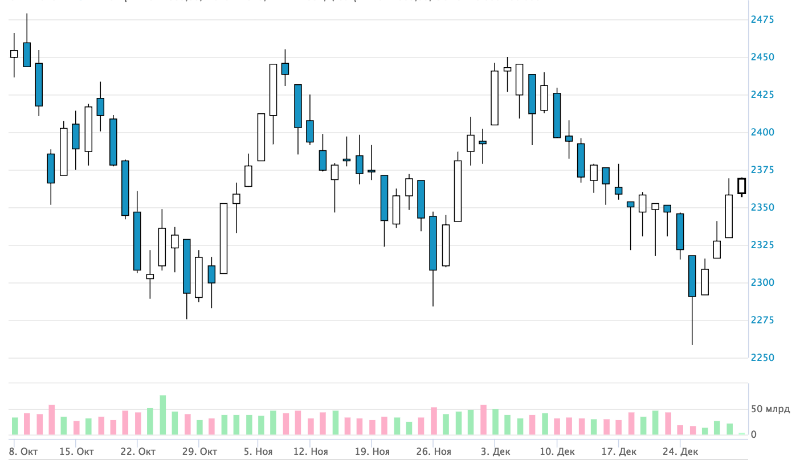Analysis: how the infrastructure of the Russian securities market works

In our previous articles, we talked about how the exchange operates and what investment tools it provides. Today we will talk about the structure of the Russian stock market as a whole.
Note : any investment activity on the exchange is associated with a certain risk, this must be taken into account. In addition, to make investments you need a brokerage account, you can open it online . You can study trading software and practice performing operations using test access with virtual money .
Regulatory authority
Exchange trading in any country is under the scrutiny of the state. The market is always regulated by some state organization. Such regulators formulate the rules for working in the market, conduct licensing of participants and supervise their activities, monitor the observance of shareholder rights by issuing shares, give permission to issue shares, etc.
In the United States, the Securities and Exchange Commission (SEC) is the regulator of the stock market, and in Russia the Federal Financial Markets Service (FFMS) was such an authority, but on September 1, 2013 it was abolished. and its functions were transferred to the Central Bank.
It is the Central Bank that analyzes the work of market participants, and if it notices violations, it reacts harshly - with serious fines or revocation of a license.
Stock exchange
The key element of the system, which is logical, is the exchange. This is the platform on which transactions with financial instruments (stocks, currency, etc.) are performed. In our country, the Moscow Exchange is the main and largest. It arose as a result of the merger of two competing sites - MICEX and RTS. At Mosbirzhe, as well as at the world's largest venues, trade is conducted electronically via the Internet.
On the Moscow Exchange, investors make transactions with securities and derivatives (futures, options), currency, gold, shares of exchange-traded funds and other financial instruments. In addition, the St. Petersburg Mercantile Exchange is trading in oil, oil products and futures for them.
Like abroad, the Russian market has its own stock indices. The most famous are the RTS and Mosbirzhi indices (the former MICEX index). There are also indices of various industrial sectors (so-called industry indices).
Depository, Clearing Center, Settlement Chamber
Other key elements of market infrastructure are the depository and clearing center. The depositary shall keep records of the rights of the latter to their securities. He takes into account the transfer of ownership of securities of customers (they are called depositors) when they buy and sell them.
The clearing center, on the other hand, must make settlements based on the register of transactions made on the exchange, and provide information on the necessary write-offs and charges according to the results of the trading session. The Moscow Exchange Group includes the National Clearing Center (NCC)
There are also clearing houses at exchanges, whose functions include accounting for the money of bidders, delivering money to sellers for each transaction, debiting funds from buyers' accounts, and making money transfers.
NPO National Settlement Depository (CJSC “NSD”) combines the functions of a settlement depository and a clearing house.
Brokers
According to the current rules, a citizen cannot just take and start making operations on the exchange. To access trading in securities and other financial instruments, you must open a special account with a brokerage company. ITI Capital is just such a broker, you can open an account with us online .
In fact, the broker has access to one or another market on the exchange, and investors, by voice or buttons in the trading terminal, instruct him to complete certain transactions for them. These applications are sent to the exchange, but on behalf of the broker, who then, in his own system, will calculate the profit or loss of the client for the transaction.
Brokers license the Central Bank and build their own trading infrastructure and create software, including trading terminals.
Investors
The stock market unites various categories of investors: from novice people looking for the opportunity to save and increase finances, to professional traders and corporate investors.
All these participants not only have different experience and financial resources, but also implement strategies of various types. They can be characterized by the method of opening and closing positions (transactions), the duration of holding positions and so on.
For example, day traders (day traders) make transactions mainly within the same trading session and do not leave “open positions” at night, fearing changes in market conditions and unpredictable price fluctuations while the exchange is closed or the trader cannot monitor the market. Scalpers make many trades within a short period of time: from a couple of seconds to several minutes, each time I earn a little.
Medium-term traders conduct several operations per year, and long-term investors' transactions can last several years, and they close them only when global trends in the market change.
Day traders and scalpers are usually ordinary market participants, and various funds and financial institutions adhere to medium-term or long-term investment strategies.
That's all for today. Thank you for your attention, we will be happy to answer the questions in the comments.
Useful links on the topic of investment and stock trading:
All Articles